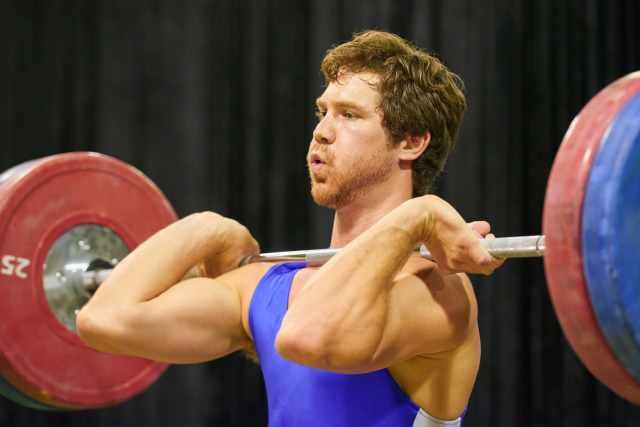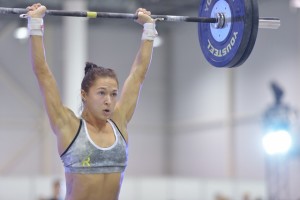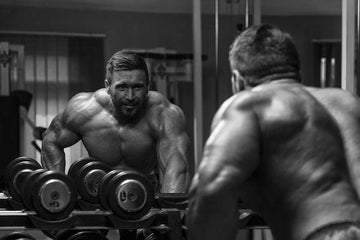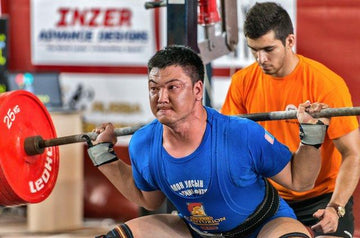

Burn the Fat with Olympic Weightlifting
Table of Contents
As a fitness writer, I’ve frequently interviewed exercise gurus who’ve pointed out that fat is not the primary energy source during any type of weight training. However, it’s incorrect to assume that weight training is therefore ineffective for fat loss. In fact, weight training raises your metabolism, which is the rate at which you burn calories.
Not only does weightlifting burn fat during the activity, but also after the workout is completed – and the effect lasts longer than it does with aerobic exercise. In other words, when you look at an entire day of activities, a competitive weightlifter will burn more body fat from their workout than an aerobic athlete will from theirs. Despite the evidence, some fitness gurus, such as Covert Bailey, were not convinced.

OK, next let’s look at some research.
Concerning aerobic exercise, consider a 12-week study on obese women who performed aerobic activity that was published in 1998 in the International Journal of Sports Nutrition. The group that did aerobic exercise lost an average of only 1.3 kilos (2.9 pounds), leading head researcher Alan Utter to conclude, “Moderate exercise training has a minor, nonsignificant effect on fat mass.”
On a larger scale, in a review of 493 studies on aerobic exercise between 1969 and 1994, researchers found that 15 weeks of aerobic exercise typically produced a weight loss of only 3.3 kilos (7.3 pounds). In addition to those disappointing results, there is also a risk that too much aerobic exercise may increase body fat: A study on aerobics instructors found that those instructors with the highest body fat levels were the ones who taught the most classes, a phenomenon that led to the creation of the term, “Chunky Aerobics Instructor Syndrome.”
One of the best studies on the effects of the sport of weightlifting on fat loss was headed by former competitive Olympic lifter and weightlifting coach Mike Stone, PhD. His paper “Cardiovascular Responses to Short-Term Olympic Style Weight-Training in Young Men” was published in the Canadian Journal of Applied Sport Sciences in 1983. In eight weeks, using conventional weightlifting training protocols, the subjects decreased their body fat by six percent and increased their lean mass by four percent. I think most overweight individuals would be quite interested in a program that could achieve results such as these without any specific diet.
A recent trend is to combine high-rep weightlifting movements with interval training. A 2013 study at Ohio State looked at such a training system, following individuals who trained five days a week for 10 weeks. Of the subjects who completed the follow-up assessment, the male participants’ body fat decreased from 22.2 percent to 18 percent and the female participants’ decreased from 26.6 percent to 23.2 percent. These results are not as impressive as those in Stone’s study but are still excellent. The problem here is that we don’t know how much of that fat loss is attributable to the weightlifting and how much to the other types of exercise.

The snatch and the clean and jerk are often regarded as “large amplitude activities,” such that they move the body through a large range of motion and therefore use a lot of muscle. That’s what makes these lifts great calorie burners. The physiological effects of weightlifting were examined in “Unique Aspects of Competitive Weightlifting,” a study published in 2012 in the journal Sports Medicine. Researchers Adam Storey and Heather K. Smith found that caloric expenditure during moderate-to-high volume weightlifting training “…is comparable with the metabolic cost incurred by high-volume circuit-style resistance exercise.”
Storey and Smith’s paper also looked at growth hormone production. Growth hormone production is related to fat loss and is the basis of German Body Comp, a popular program in a book I edited of that same title. Storey and Smith said that “…4.5-13-fold increases in GH

There is solid research from respected sport scientists such as William Kraemer, PhD, that the optimal rate of growth hormone production appears to be around 70-75 percent of an individual’s one-repetition maximum (1RM) in an exercise. However, this percentage is seldom achieved in many of the popular workout protocols that use high-rep Olympic lifts; by having individuals do the lifts but keeping the effort around 50 percent of the 1RM, there is little effect on growth hormone production.
According to many European weightlifting coaches, the average training weight of European lifters is about 75-80 percent of their 1RM; they don’t bother recording weights under 70 percent, as they don’t believe these weights offer a sport-specific training effect. An interesting perspective on this comes from Bud Charniga, a sports scientist and accomplished weightlifter who has studied the Russian weightlifting system extensively; he says that high-rep lifting changes the activity from an explosive sport using fast-twitch muscle fibers into just bodybuilding.
Another problem with high-rep Olympic lifting protocols comes from not performing the full lifts but partial versions, such as the power snatch and the power clean. Charniga says that compared to full lifts, these partial movements are much more stressful on the joints because the athlete must abruptly stop their motion. In contrast, with the full lifts the athlete has more time to decelerate the bar. Also, consider that many research studies have found that weightlifting has a low injury rate, but these studies were performed with athletes performing the full lifts with low repetitions (usually three or less).
What often happens when athletes try to perform more than three reps in the snatch or clean and jerk is that the lower back begins to round. A rounded back places unnatural posterior shearing forces on the spine and also affects lifting technique. Another issue is the grip begins to fail, and athletes have to compensate by curling their wrists under and bending their arms. Just ask Mario Martinez, a three-time Olympian in weightlifting who won the silver medal in the 1984 Olympics.
Martinez coached himself as a teenager but could only afford enough weights to load his Olympic bar to 220 pounds. To challenge his increasing strength he used higher reps in the snatch, and at one point snatched 220 pounds for 20 consecutive reps and 30 reps with about a one-minute rest halfway through. Despite having large hands and a powerful grip, he fell into the habit of pulling with bent arms in his workouts. By the time he got a coach, the problem could not be corrected; he continued to lift with bent arms throughout his entire lifting career.

There are few research studies on the body fat levels of weightlifters, but one reference is the textbook Sport Nutrition by Asker Jeukendrup, PhD, and Michael Gleeson, PhD (Human Kinetics, 2010). This book lists the body fat levels of athletes in many different sports. For male weightlifters the range was 9-16 percent; for ice hockey players, 8-15 percent; volleyball, 11-14; and tennis players, 12-16. For a more empirical perspective, attend a local weightlifting competition and you’ll find it rare to find any competitors who are even close to being overweight.
Yes, there are some heavyweight lifters who have excessive body fat, but they are not representative of the sport. However, consider that Russia’s Anatoly Pisarenko has snatched 454 pounds, clean and jerked 584 (and does a 617-pound clean!). Pisarenko weighed 275 pounds at a height of 6-foot-1 and had an impressive V-taper.
Finally, I need to address the argument that the Olympic lifts are too complex to learn. If you can do a deadlift, a front squat and a lunge, it’s likely you have sufficient mobility to do a clean and jerk. If not, don’t worry – simply performing the lifts will help improve your mobility. There is also the split style of lifting – in which the legs move fore-and-aft in the catch position rather than sideways – you could use that variation instead (or at least until your mobility improves).
There are many exercise protocols that can help individuals lose weight, and weightlifting is one of them. It’s a great calorie-burner and growth hormone producer, and it can even help you pack on some solid pounds of powerful muscle. It’s a sport I love, and I think it’s just fine as it is.

















